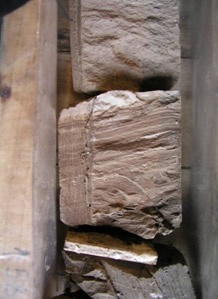
Macrofossils of fish and gastropod shells are good indicators of the freshwater setting, however layers of evaporite minerals such as gypsum attest to arid periods of climatic warmth in which the lake, at least partially, dried out. Most importantly, the sediments contain numerous and well - preserved organic microfossils including marine and freshwater algae and terrestrial sporomorphs . It is these microfossils, along with high resolution geochemical and isotope data, which form the crux of the investigation so far. This core provides us with an almost continuous record of climate in eastern Europe and western Asia in the earliest Cenozoic period. We and other scientists will be able to use it to discover how climate in continental areas relates to the oceanic signal seen elsewhere.
